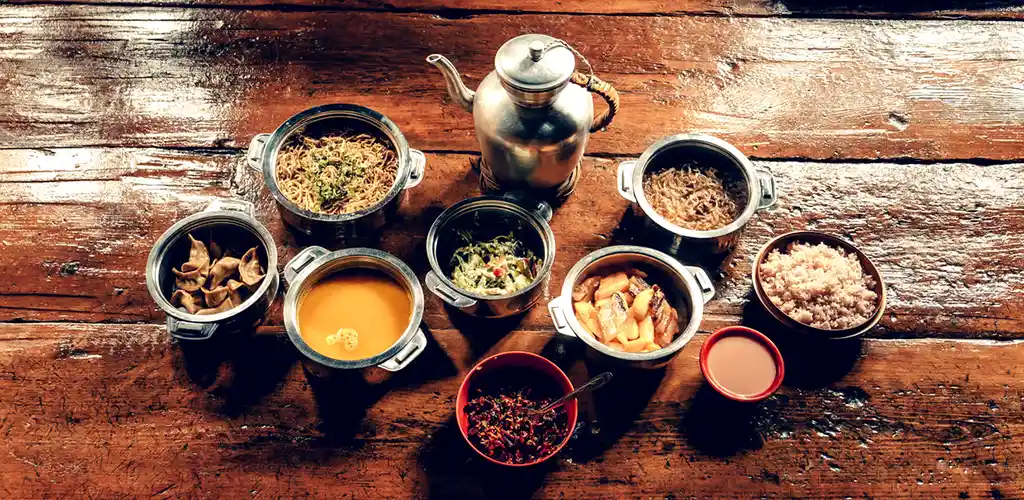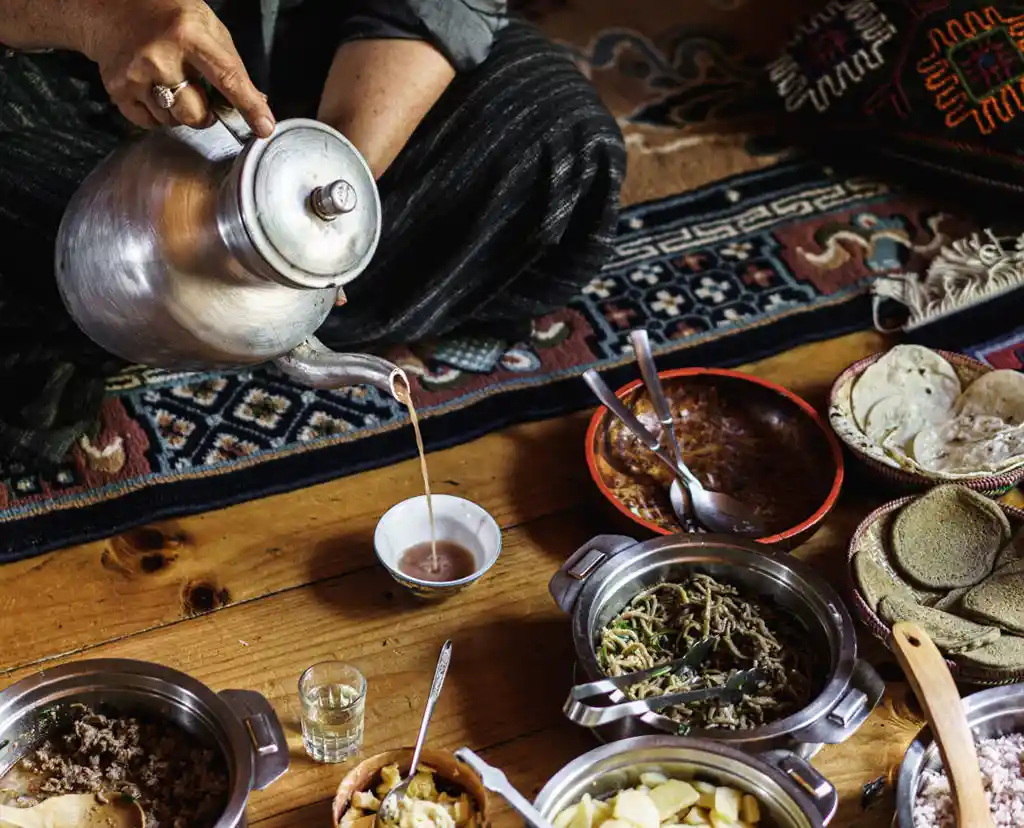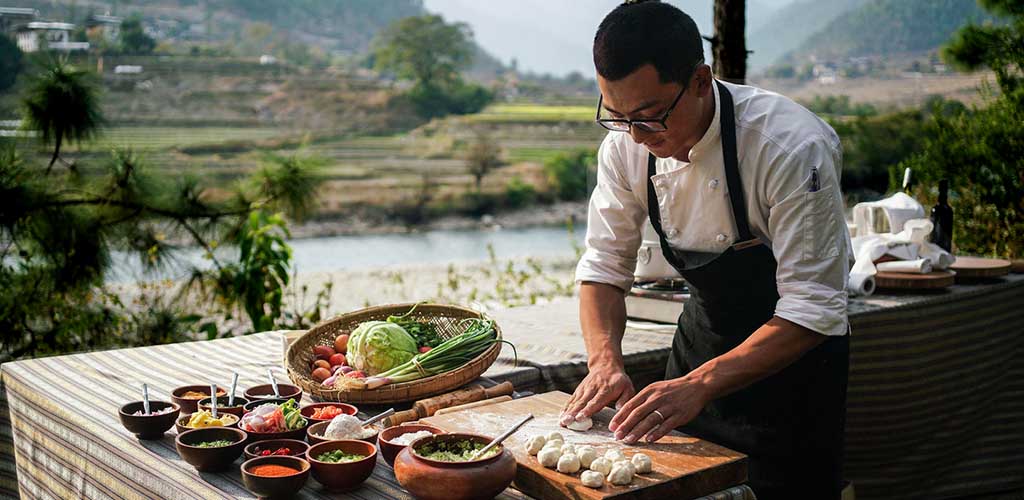Bhutan Cuisine
The outstanding highlight from Bhutan is your intimacy with the country, told through the people you meet, the culture you are immersed in, and the traditions unchanged for centuries. This intimacy extends to exploring the food, likely different in Bhutan of what you've come to expect from what you'd encounter on other places in Asia. Bhutan isn't famous for being the most delighful and like Southern Thailand, not everyone enjoy the abundance of fresh chili in almost every dish. But there are very personal moments as food provides a sphere to meet with locals and share something of yourself with the Bhutanese.
Bhutan Culinary Experiences
In Bhutan, savor regional specialties, with impromptu opportunities to get involved in a kitchen or be invited to share a local meal. Learn to understand Bhutanese cuisine it is necessary to know the basic history of the people and the importance of Bhutan in regional and in Silk Road trade, which influenced the cuisine (Chinese and Indian dishes especially prominent). Though the culinary offerings in Bhutan have little over southern neighbors, India and Thailand, (who really does?), travelers may enjoy simple but tasty country food. Maligned in the past as a cuisine mainly of yak cheese and chilies (indeed, in 2005 Ruth Reichl, Editor of Gourmet, wrote Bhutan had ''the world's worst cuisine"), there is nothing to fear—the few travelers who have trickled in before you and opening of luxury resorts, including the Aman, have created a market for more varied and quality dining and restaurants and newer hotels are delivering local dishes for international tastes and also offer Indian, Chinese and Nepali food and the results have been dramatic.

Bhutan is primarily an agrarian society that features a simpler cuisine largely confined to only four variables—the kind and quantity of chilies used, the kind of meat or vegetable, if any of either (usually radish, cabbage, potato or mushroom); and the presence or absence of dates (a local cheese akin to paneer). Did we mention chilies? They are in almost everything, much like salt in Western cuisine, but prepared as entrées in their own right for the Bhutanese love a dish with a kick of spice. Despite popular dishes that are meat-based, many Bhutanese are vegetarian and those on meat-free diets will enjoy a variety of delicious dishes.
Even if you're unfamiliar with Bhutan's cuisine, you may still know of its distinctive red rice—prominent in its dishes. Bhutanese red rice is a semi-milled red japonica rice—some of the reddish bran is left on the rice. Because of this, it cooks somewhat faster than an unmilled brown rice and is similar to brown rice in texture, but with a nutty taste. It is the only variety of rice that grows at high altitude and when cooked, the rice is pale pink, soft and slightly sticky. Buckwheat, and increasingly, corn, comprise other staples of the Bhutanese agrarian diet. Bhutanese diet also features simple dishes of chicken, yak meat, dried beef, pork, pork fat and mutton. Soups and stews of meat, rice, ferns, lentils, and dried vegetables spiced with chili peppers and cheese are a favorite meal during the cold seasons.

Zow shungois a rice dish mixed with leftover vegetables. Ema datshi, made very spicy with cheese and chili peppers (akin to chili con queso), very well might be singled out as the national dish for its ubiquity and the pride that Bhutanese have for it. Other foods include jasha maru, a chicken dish; phaksha paa, thukpa, bathup and fried rice (top and jasha tshoem, a Bhutanese chicken curry.
Popular snacks include momo (dumplings), shakam eezay (red chilies and dried beef)and liver. Other popular non-vegetarian dishes include shakam paa (Dried Beef Curry), sikkam paa (Dried Pork Curry) and paksha paa (Pork with Vegetables). Dairy foods, particularly butter and cheese from yak and cow, are also popular, and indeed almost all milk is turned to butter and cheese. Popular beverages include butter tea, tea, locally brewed ara (rice wine) and beer. Spices include cardamom, ginger, chili peppers, thingay (Sichuan pepper), garlic, turmeric and caraway
Dining customs and considerations in Bhutan are much like in Myanmar—don't feel awkward if someone refuses to eat with you upon invitation; when offered food, one says meshu meshu, covering one's mouth with the hands in refusal according to Bhutanese manners... but then will give in on a second or third offer, so be politely persistent with your invitation.


